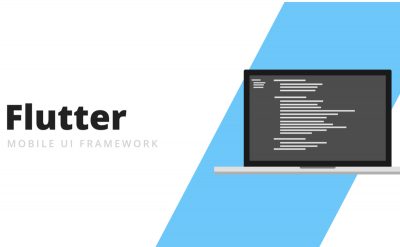Even though cloud technologies and modern programming models such as cloud-native have been available for enterprises for a long time, many enterprise applications still use legacy or application servers to operate.
It is essential for enterprises of every size, type, and industry to modernize their applications to gain a competitive edge in their industry. Application modernization is a process of enriching existing applications to deliver a top-notch client experience and get a higher ROI.
What are the reasons to modernize your enterprise applications?
The following are the three crucial reasons why organizations must modernize their applications:
Better agility
Every industry is witnessing evolution at a greater speed. Critical applications must adapt to keep up with evolving technologies, to meet and exceed user expectations, and to introduce new features and tools quickly as per the demand of evolving core applications.
- Accomplish faster time to market and better agility:
Deploying the latest monolithic application versions is an intricate and time-consuming process. Utilization of containers and a container orchestration platform such as Kubernetes for application deployment and implementation of the best DevOps practices, like CI/CD, can be the first step toward modernization and delivering applications regularly with greater ease than earlier. Additionally, breaking monolithic enterprise applications into smaller deployable units and microservices can help update separate parts of the application. Further, with CI/CD, one can roll back the latest updates to running versions in case of issues.
- Allows the development of new and better features:
Enterprise applications were developed rapidly over the years and were developed by different people. This led to the creation of a considerable amount of technical arrears. Technical debt uses a large budget and resources to ensure the application is up and running. Additionally, it makes the development of more new features challenging. Therefore, it is better to refactor and re-architect the applications one wants to extend. Moreover, enterprise application modernization will also help fuel digital transformation efforts.
- Execute core business applications on advanced future-ready platforms:
Implementing cloud-native architectures, containerization, and orchestration and modernizing core business applications to run on a future-ready platform will provide a stable platform and real-time support from the OPS team. Many advanced future-ready platforms run on on-premises and multiple public clouds.
- Enhance operational efficiency:
All applications can be managed on container platforms if they are run consistently. Everything can act as a container regardless of what programming language, runtime or application stacks is being used. This approach streamlines operational procedures but needs organizational and cultural changes.
Enriched experiences.
Providing interactive and innovative user experiences is the core factor that drives the need for application modernization. Modernizing the enterprise application can enhance not just user but also developer experience.
- Enhance the user experience:
Application users determine if the application is good or bad. Hence, all enterprises must strive to deliver a good user experience. Traditional applications might have some limitations that can be overcome with the help of advanced tools. For instance, developing new user interfaces, APIs, or mobile applications will deliver quicker responses, resilience, and others.
- Higher developer productivity:
Developers can increase productivity through containers by addressing the “it works on my machine” issue; setting up development environments is also quicker. Furthermore, implementing containers and other modular service-based architectures can make enterprise applications polyglot because different services can be delivered in various languages.
Minimize operational cost.
When it comes to application modernization, everything revolves around the cost. The cost pertains to both migrating newer applications and technologies, and there’s also a cost of not moving them. Following are a few cost benefits that must be taken into account in order to understand the impact of application modernization:
- Minimize resource utilization:
Mostly, enterprise apps run on virtual machines. Running the same applications in containers can save substantial resources, especially memory. Furthermore, advanced container orchestration platforms can help enterprises balance workloads more efficiently than virtual machines. Advanced development libraries, tools, and runtimes can save resources. The utilization of containers and modern libraries often do not need code edits.
- Minimize the license cost:
Off the shelf or commercial software services may require organizations to pay license costs. There is much open-source software available with advanced tools to replace commercial tools. Multiple open-source projects deliver free help and fixes.
- Minimize the support cost:
Often, legacy applications turn out to be an expensive affair, maybe after the official support for servers or platforms has ended or due to the lack of a developer to maintain the code. The enterprises have an option to choose from various software as a service (SaaS), platform as a service (PaaS), infrastructure as a service (IaaS), or open-source offerings to curb their expenses.
Top five ways to move and modernize enterprise applications:
Assort the monolith:
One of the initial steps for application modernization is to design a model of what the applications look like. One needs to understand the following aspects:
- Network configurations.
- Storage configurations.
- How to deploy the application on the servers.
Furthermore, one must also understand how to model all of the networking between the individual components. Post that, there’s a need to decode the model into various building blocks and configurations. Assorting the monolith into different working aspects will make it easier to create a virtual application environment with advanced tools like containers. These approaches have been tested before, advances with software-defined infrastructure have made it possible to implement at scale.
Liberate the applications from infrastructure:
Another step to efficiently modernize enterprise applications is to abstract them and make them independent from any underlying infrastructure. Sources of data and network and security configurations, all can be abstracted. The abstraction of the application functions into components that can run from anywhere will make it possible to migrate applications to other infrastructure combinations without changing a single line of the code. The software-defined infrastructure allows enterprises to compose the application form with these components and, thus, make profits.
Design a strategic plan to reduce the cost:
An enterprise’s complete application lifecycle comprises multiple application environments – with various versions and unique deployment types. After an enterprise segregates an application into its essential components, it can keep a catalog that simplifies the process of creating unlimited new application versions. This approach will allow developers, test engineers, and DevOps teams to select any combination of components they may require. Additionally, they can clone the existing complex application environments in real-time for testing and deployment. The cloning process happens in minutes because the catalog has all the databases it needs. As a result, there is a substantial increase in operational time to test integration, performance, planning, and migration processes.
Implement security in the application:
It is usually recommended not to tack on the application security after deployment. If done, it slows down the continuous delivery process like DevOps and generates friction between the DevOps and the security teams. Alternatively, one can consider security as one of the primary components of the entire application environment and give it the same importance as given to other components by baking it into the application from the start. As a result, enterprises can protect their applications immediately once they are deployed, irrespective of their infrastructure.
Seamlessly integrated with DevOps:
Point and click, push-button approach through a modern UI will streamline the up-gradation process of enterprise applications. Additionally, it’s easier when opting for tight integration with continuous deployment tools and processes like DevOps.
Furthermore, the enterprise applications should be accessible, which means new instance delivery should be completely automated. The easiest way to achieve this is by integrating virtualized application environments with orchestration tools that most enterprises utilize to deliver infrastructure. The primary enhancement being explored is directly connecting a catalog of portable, virtualized application components with the orchestration tools, including the provisioning of storage options, which also needs to be completely automated. Therefore, modern applications will not depend on certain information they rely on.
Conclusion:
A modular view of the enterprise applications must be the base of the application modernization process. Enterprise application modernization is a need of the hour to get your business a competitive edge it needs to operate.
Feel free to read more about application modernization in the whitepapers.













